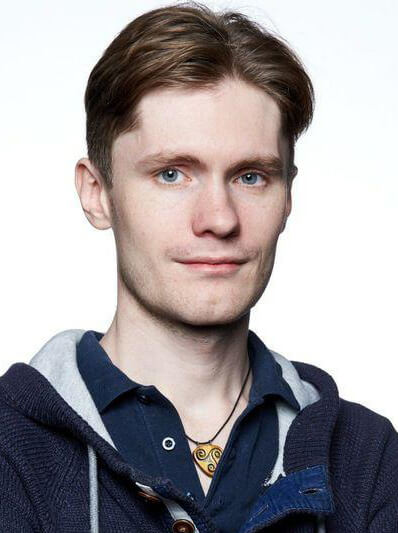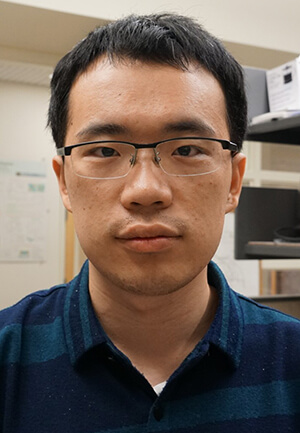September 16, 2020
Second annual Shark Tank Competition lets nanotechnology students test communication waters
Imagine for a moment your research has finally paid off. You have developed a novel agricultural sensor that has the capacity to change production for the better for thousands of Midwest farmers. That’s great, but what’s the next step?
The question of how researchers garner the attention of the general public, media, or broader community is not a topic that’s often taught in STEM-heavy curricula, says Ali Shakouri, the Mary Jo and Robert L. Kirk Director of the Birck Nanotechnology Center. The Office of the Dean for Research and Graduate Education in Purdue’s College of Liberal Arts and the Birck Nanotechnology Center in Purdue’s Discovery Park have taken a page from a popular television show and developed the Science Communication Shark Tank Competition to address this need.
Pitching an idea to the general public or the media requires a skill that is seldom taught in science and engineering – storytelling, Shakouri says. It requires more than just a solid, pretty presentation; it involves making a connection with the audience; timing, flexibility and delivery; creating a strong argument; and using numbers and data to leverage the story.
 Pavel Terekhov
Pavel Terekhov
Pavel Terekhov, a postdoctoral researcher in Birck Nanotechnology Center, has proposed a new approach to engineer the optical properties of nanostructures using “oligomers,” or combinations of several nanoparticles. Although his education has steeped him in the fundamentals of photonics, he wasn’t sure how to take his innovation to the next level.
“Shark Tank competition was a great opportunity for me — I like telling stories about science, but I was happy to improve my skills in this area," Terekhov says. "The competitive part also spiced it up and motivated me to learn! I enjoyed the workshop and was happy to implement new knowledge making the final presentation. I think that science storytelling is a very important part of a scientific career, and it deserves even more attention. Events like Shark Tank help it a lot!”
Terekhov won the competition and the $500 prize with “Nanostructured Scatters for Modern Optical Devices.”
 Peng Wu
Peng Wu
Peng Wu, a PhD student in electrical and computer engineering who earned runner-up in the competition, engaged the judges with “2D Materials and Hardware Security.” Wu’s project centered on building secure microelectronic chips using a novel types of materials that are just a few atoms thick. Wu walked away with a $100 cash prize.
"The Shark Tank competition is a great platform for us to learn and practice how to communicate our research to general public,” Wu says. “We've all given talks and presentations to other researchers during research conferences, but to communicate to people outside of the research community and grab their attention is just a next-level challenge.”
The Science Communication Shark Tank competition gave students a chance to learn and train in these skills by playing a real-life game. Teams participated in a science storytelling seminar, learned how to create a scientific story, and prepared written and spoken presentations. The presentations were judged on May 15 in a virtual Shark Tank competition by four communication professionals:
- Moira Gunn, host of NPR’s "Tech Nation" and "BioTech Nation."
- Sharon Weinberger, Washington, D.C., bureau chief for Yahoo News.
- Theresa Mayer, executive vice president for research and partnerships at Purdue.
- Sorin Adam Matei, associate dean for research and graduate education in Purdue's College of Liberal Arts and professor of communication.
The judges further coached the winners and advised them on how to place their stories in the media.
Matei is the creator of Purdue’s Data Storytelling Network, a series of noncredit courses combining the elements of rhetoric, data science, visual arts and storytelling. He and Shakouri created the Shark Tank competition as a means to broaden and diversify the learning experiences of STEM students at Purdue and to teach them the necessary skills to become master communicators and academic or business leaders.
“The initiative combines a fun factor with solid scholarship on what makes good science stories. In designing the learning experience I proposed a new definition for storytelling, which says that good stories always teach by surprising the audience with unexpected explanations,” Matei says. “In effect, we claim that all good science is story-ready, because it proposes new explanations for existing facts.”
Teams of up to five students attended a series of four evening training workshops where they had opportunities to learn from leading experts with multidisciplinary experience in storytelling techniques from both Purdue Polytechnic and the Brian Lamb School of Communication. At the conclusion of the workshop series, participants created a five-minute oral presentation, which they gave to their peers and, if they were selected as a finalist, at the Shark Tank competition. All participants were certified as “science storytellers.”
The Shark Tank workshops boasted 23 students in 12 teams, and for the final competition, 13 students on eight teams submitted video presentations. Topics ranged widely over the research areas of Birck Nanotechnology Center, including nanoelectronics hardware security, nanophotonics, rapid disease diagnostics, food quality monitoring, water quality testing and artificial skin.
The third annual Science Communication Shark Tank Competition will be held this winter. The competition also will be developed as a course on Purdue’s BrightSpace learning community, which will allow entrants access to the resources and competition remotely as well as in person. For more information regarding the Science Communication Shark Tank, contact Neil Dilley at ndilley@purdue.edu.
About Birck Nanotechnology Center
Birck Nanotechnology Center offers 186,000 square feet of space that includes a 25,000 square foot ISO Class 3-4-5 (Class 1-10-100) nanofabrication cleanroom space for the Scifres Nanotechnology Laboratory. The Birck Center provides infrastructure for 160 affiliated faculty members and their research groups from 36 academic units at Purdue. The Birck Center provides support for the Network for Computational Nanotechnology (NCN) as well as its nanoHUB science gateway. The Birck Center provides capabilities in nanoscale metrology, materials growth and deposition, nanoelectronics and microelectronics, microelectromechanical and nanoelectromechanical systems, energy conversion, nanofabrication, electronic and physical characterization, nanophotonics, bionanotechnology, nanochemistry, and theory and computation.
About Discovery Park
Discovery Park is a place where Purdue researchers move beyond traditional boundaries, collaborating across disciplines and with policymakers and business leaders to create solutions for a better world. Grand challenges of global health, global conflict and security, and those that lie at the nexus of sustainable energy, world food supply, water and the environment are the focus of researchers in Discovery Park. The translation of discovery to impact is integrated into the fabric of Discovery Park through entrepreneurship programs and partnerships.
Source: Neil Dilley, ndilley@purdue.edu
Writer: Elizabeth Harwood, eharwood@purdue.edu

